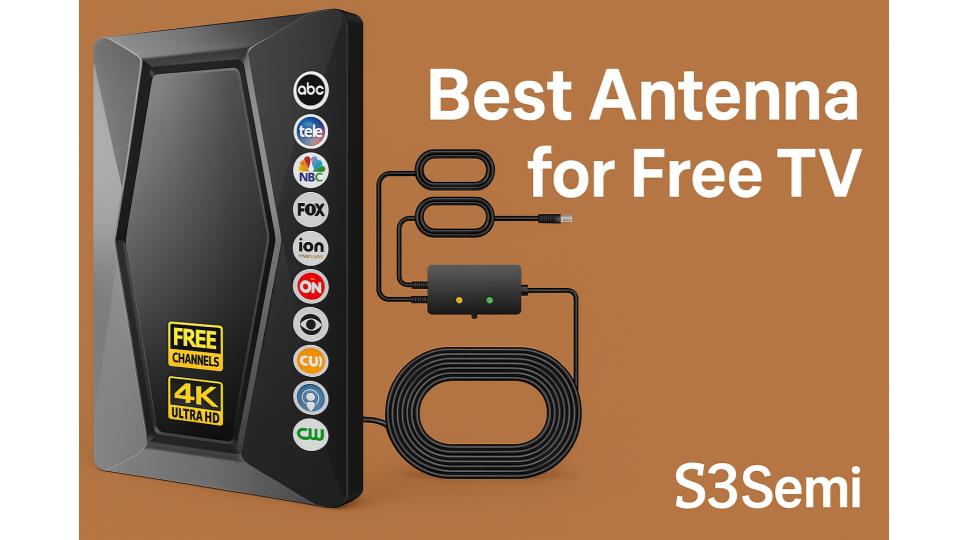Free TV antennas let you watch broadcast channels without paying for cable or streaming services. They work by picking up signals from local TV stations and converting them into a picture on your TV. Antennas come in many shapes and sizes, from simple indoor models to larger outdoor units designed for longer distances.
📶 📺 Antennas for Free TV ⭐⭐⭐⭐
Choosing the right antenna depends on where you live and the channels you want to get. Signal strength, distance from broadcast towers, and whether you want to mount the antenna inside or outside all matter. Some antennas work better for urban areas with strong signals, while others are made for rural locations far from towers.
The most important things to consider are the antenna’s range, design, and ease of installation. You also want to think about what channels are available in your area and if the antenna can pick them up reliably. We tested several antennas to find options that balance performance, price, and convenience.
Contents
- 1 Best Antennas for Free TV
- 2 Buying Guide
- 3 Frequently Asked Questions
- 3.1 What are the top-rated indoor TV antennas for high-range reception?
- 3.2 How do I select the best outdoor TV antenna for my location?
- 3.3 Which TV antennas are recommended for rural areas with poor reception?
- 3.4 What do consumer reports suggest about the top performing TV antennas?
- 3.5 Can I access free to air TV channels without an antenna, and if so, how?
- 3.6 Is there a government program that provides free TV antennas?
Best Antennas for Free TV
We have tested many antennas to find the best options for free TV. Our list includes models that offer clear signals and easy setup. These antennas work well in different locations and budgets.
Fronguld 2025 TV Antenna
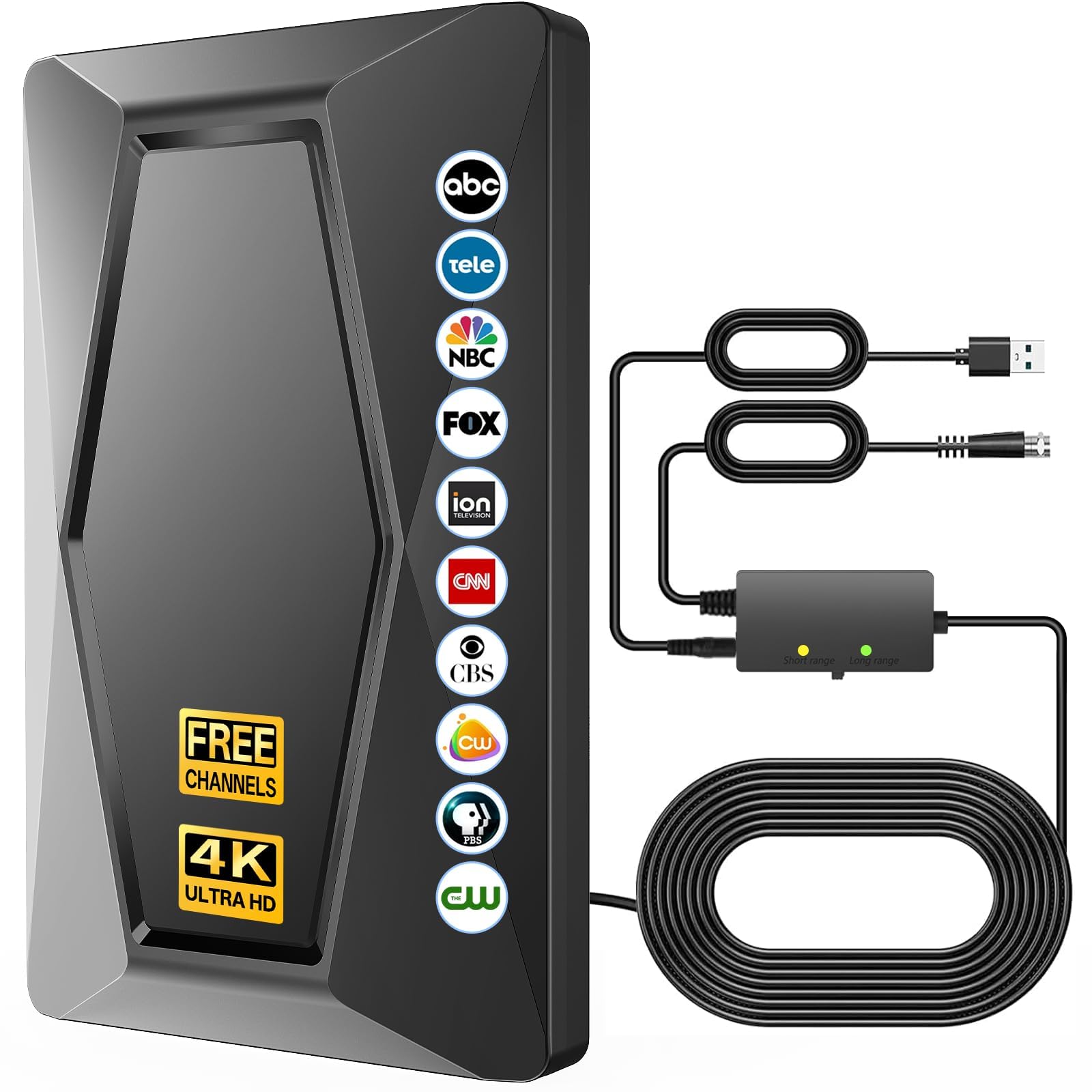
This antenna is a solid choice for anyone wanting free local TV with strong signal reception both indoors and outdoors.
Pros
- Picks up signals from all directions with its 360° reception
- Easy to install and switch between long and short range modes
- Works well in bad weather without losing signal
Cons
- Cable is a bit thick and may be stiff to position
- Signal strength can vary depending on house location
- Shorter antenna length might limit placement options
We found the Fronguld antenna to be simple to set up without needing extra tools. Just plug it in and scan for channels. Switching between the long and short range modes helped us get better reception based on how far we were from broadcast towers.
Using it indoors near a window gave us over 30 clear channels in HD. Its 360-degree signal feature made placement less stressful because it didn’t require exact positioning. The built-in amplifier boosted the picture quality noticeably.
While it stood up well to storms and cloudy weather, sometimes the cable’s thickness made it tricky to hide or angle just right. Still, for the price and overall performance, this antenna delivers reliable free TV without monthly fees.
Thridccfoo 2025 TV Antenna

This antenna is a solid pick if you want clear local channels with easy setup and strong signal range.
Pros
- Picks up many HD channels with stable reception
- Works indoors and outdoors with a long coaxial cable
- Simple installation—ready to use in about a minute
Cons
- Signal strength can vary if the antenna is not placed well
- A bit large for small spaces
- You might need to rescan channels after moving it
We found the Thridccfoo antenna very easy to use right out of the box. Setting it up took only a minute, and scanning for local stations was quick. After that, the picture quality was sharp with very few drops or interruptions.
The signal booster inside actually makes a difference. Even from longer distances, the channels came in clear, and many popular networks showed up without any fuss. The long cable let us try different spots around the house, which helped get the best reception.
One thing to watch is placement. Moving the antenna around can make a clear difference in signals, so it takes a little adjusting to get the best results. Overall, this antenna seems to perform well for anyone who wants to cut cable and still watch local TV with good quality.
Gesobyte Indoor TV Antenna
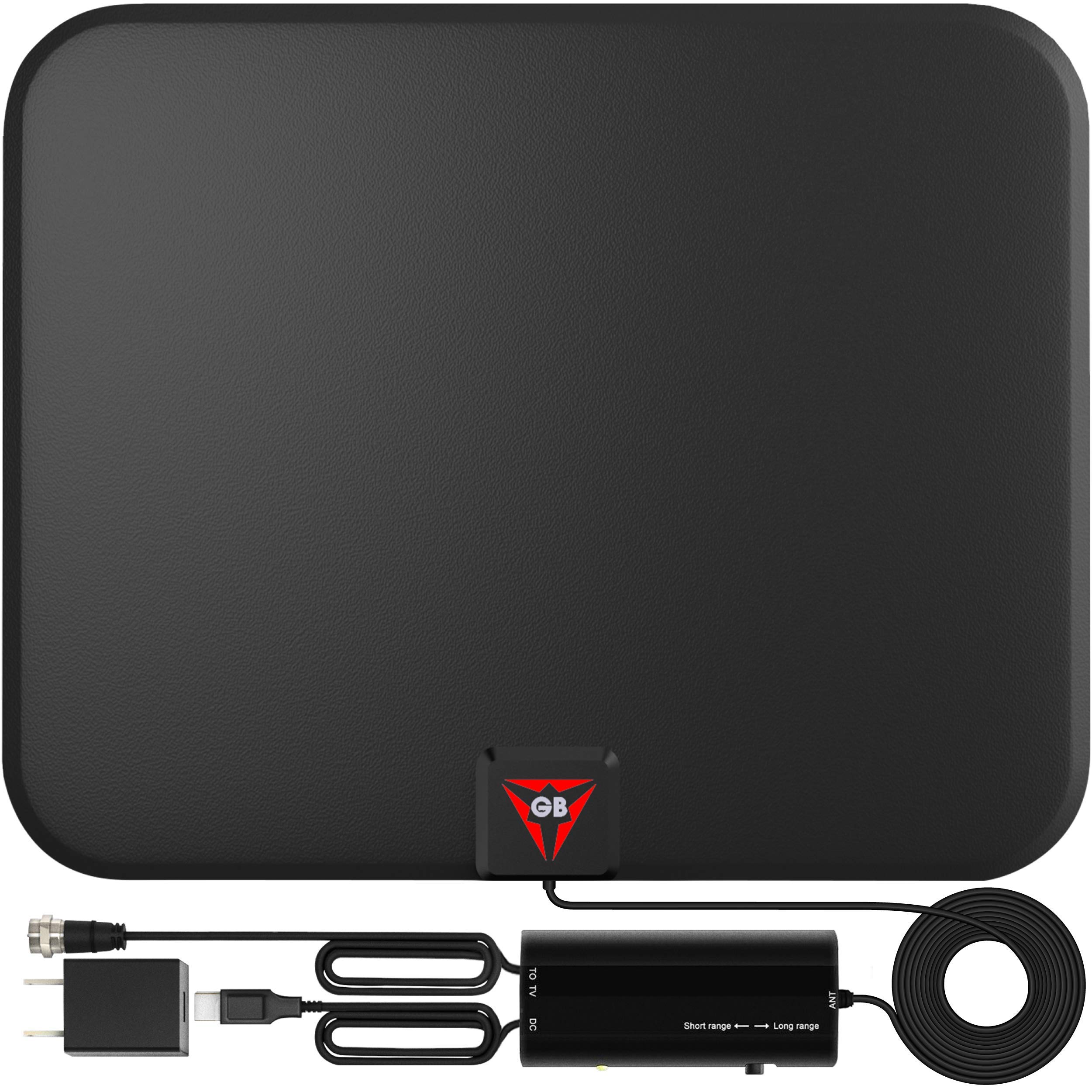
This antenna works well for picking up local channels with good picture and sound quality at a fair price.
Pros
- Clear HD picture and sound with less interference
- Long cable and amplifier let us place it where signals are strongest
- Easy to set up and move around for better reception
Cons
- Cable can be noticeable and tricky to hide indoors
- Works best when placed near a window or outer wall
- Some users might need to rescan channels often
We found the Gesobyte indoor antenna practical for cutting cable costs and still watching popular channels. The amplifier really helped bring in stations clearly, even from far away. Setting it up was simple, and it took just a few minutes to find a good spot by a window.
Sometimes, the cable is a bit long and awkward to manage in our living room. It isn’t the most discreet setup, but it works well enough if you don’t mind a visible wire. The antenna does need rescanning after moving it, but that is an easy step to get the best channels.
Overall, it delivered consistent signal strength and clear sound in our experience. For anyone wanting a simple, budget-friendly way to get free HDTV, this is a solid option to consider.
Oyned 2025 Long Range TV Antenna
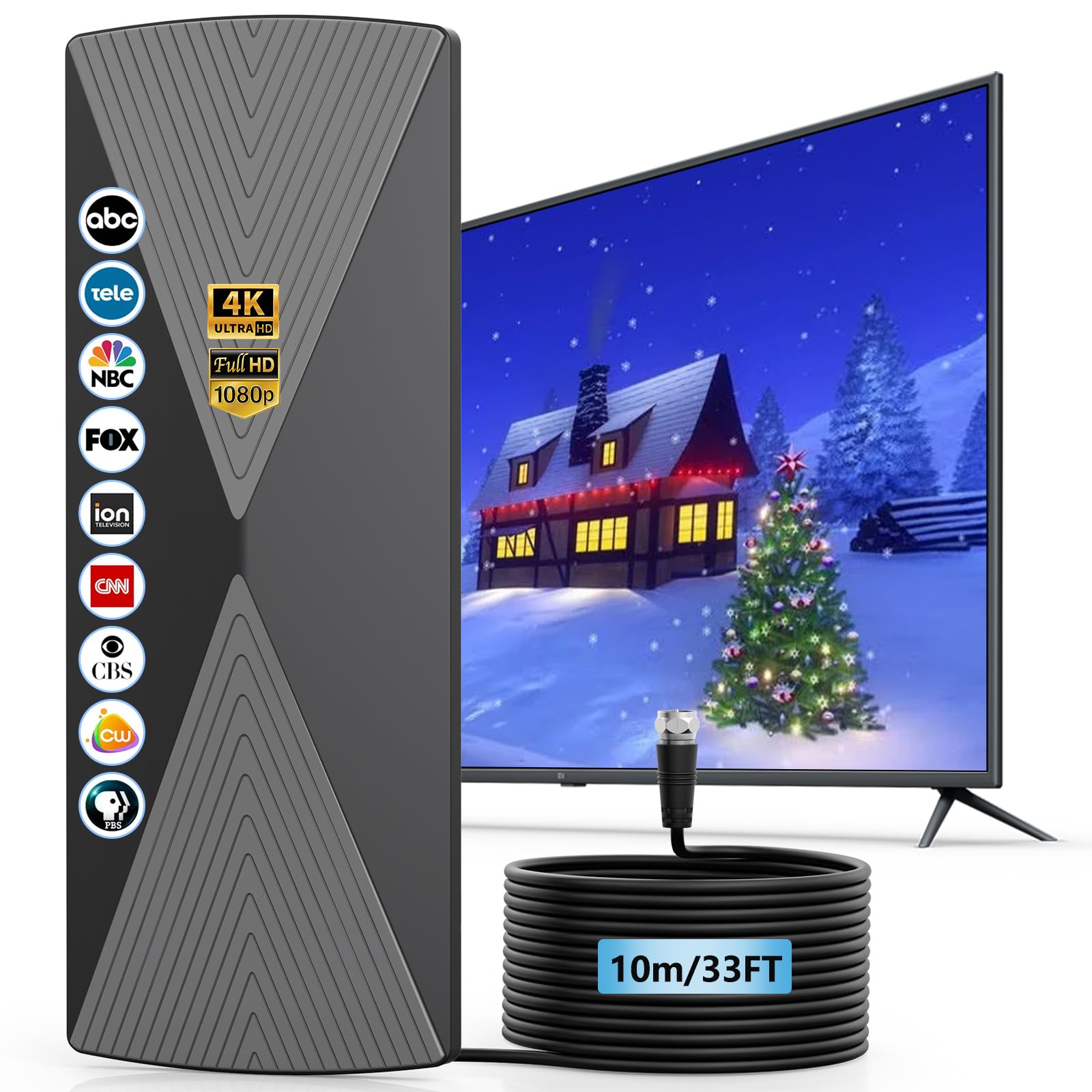
This antenna works well for free local channels, especially if you need solid range and easy indoor or outdoor setup.
Pros
- Picks up many channels clearly, even far from broadcast towers
- Works both inside and outside with weather resistance
- Long cable and simple installation options make placement flexible
Cons
- Reception quality can vary depending on your location
- Signal boost may not eliminate all interference
- Some users report fewer channels than expected in certain areas
The Oyned antenna impressed us with its wide range of channel picks, pulling in over 70 stations in HD. Using it indoors, we found that placing it near a window or higher spots improved signal noticeably. It handled weather well when tested outdoors too.
Setup was easy thanks to the long 33-foot cable and multiple mounting methods. Whether we stuck it on a window or mounted it on a wall, the signal stayed steady. The antenna’s compact design doesn’t take much space, making it a practical choice for many homes.
One thing to keep in mind is that reception depends on how close you are to towers and the surrounding environment. While the 1200+ mile claimed reach sounds excellent, actual results vary. However, for the price and ease, this antenna delivered a good balance of performance and convenience.
HIDB Indoor TV Antenna
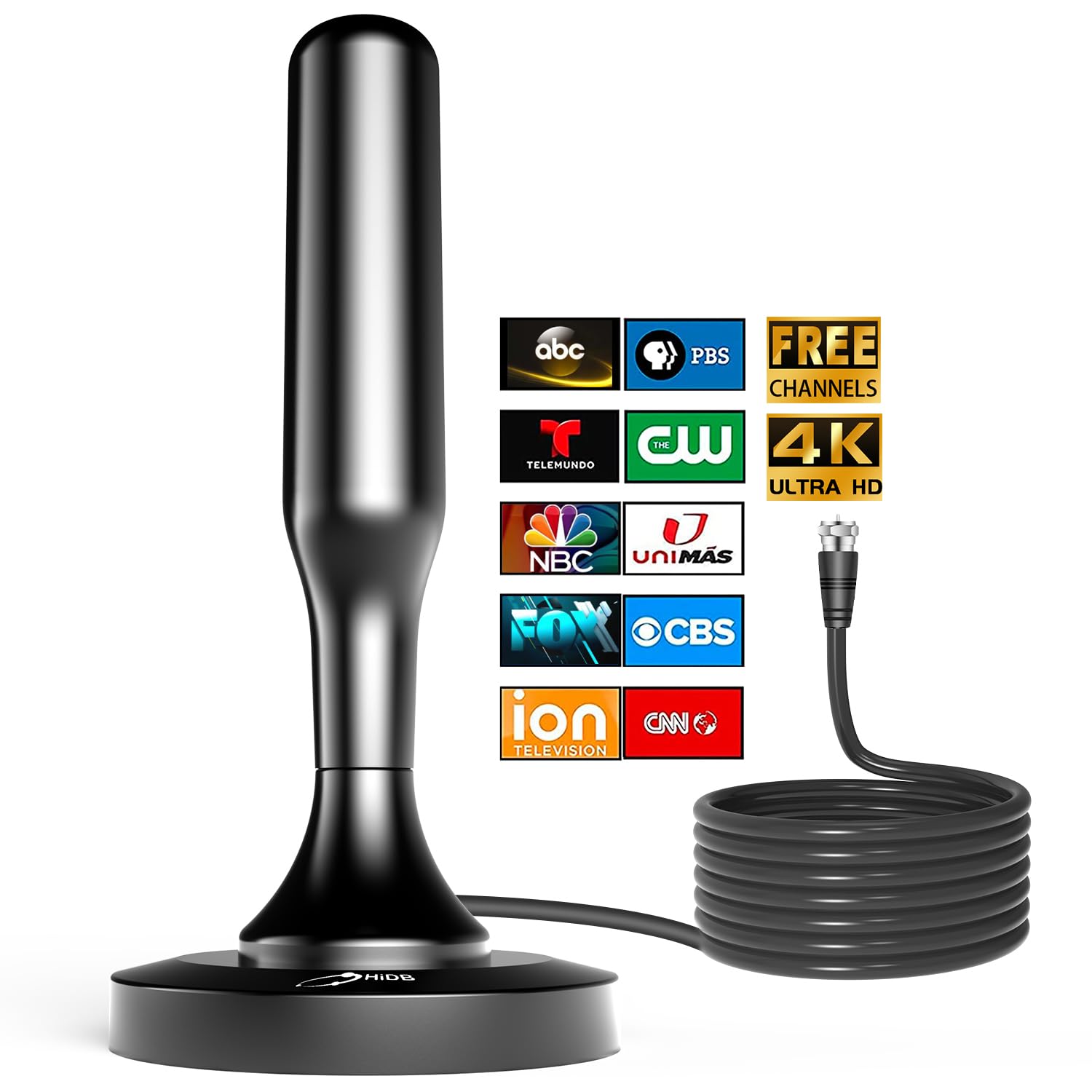
This antenna works well for many of us looking for simple free TV access with easy setup and good reception in most indoor spots.
Pros
- Easy to install with no extra power needed
- Compact design fits well in small spaces
- Strong magnetic base helps keep it steady
Cons
- Reception can vary depending on location
- Sometimes signal cuts out if the antenna isn’t placed right
- Not the best if you live far from broadcast towers
We found setting up the HIDB antenna straightforward. It just plugs into the TV, and often, channels come in quickly without extra steps. The magnetic base helps when placing it on metal surfaces, keeping it stable.
Because it’s small, it fits nicely on a shelf or behind the TV without clutter. However, its signal depends a lot on where you put it. We had to move it around a bit to get clearer reception.
Some of us saw fewer channels if there were buildings or weather interruptions nearby. Despite this, the antenna worked well indoors and gave HD quality for many local stations without monthly fees.
Buying Guide
When choosing the best antenna for free TV, we need to think about a few key features. The first is signal range. This tells us how far the antenna can pick up channels. If we live far from broadcast towers, we should get an antenna with a longer range.
Next, consider directionality. Some antennas are omnidirectional, which means they pick up signals from all directions. Others are directional and need to be pointed at the signal source. Directional antennas often get better reception but may need adjusting.
The third important factor is antenna type. There are indoor and outdoor models. Indoor antennas are easier to set up but may have a shorter range. Outdoor antennas usually get stronger signals but require installation outside or on a roof.
Below is a table summarizing these points:
| Feature | What to Consider | Why It Matters |
|---|---|---|
| Signal Range | Short, medium, or long range | Bigger range picks up more channels |
| Directionality | Omnidirectional vs. directional | Omnidirectional is easy; directional is stronger |
| Antenna Type | Indoor or outdoor | Location affects signal strength and setup |
Check if the antenna supports HDTV signals. Most modern antennas do, but it is best to be sure.
Lastly, consider if extra features like built-in amplifiers to boost weak signals are required. These can help in areas with poor reception but are not always necessary.
Frequently Asked Questions
We cover common questions about indoor and outdoor TV antennas. We also explain how to choose the right antenna for your area and what experts recommend. Finally, we look at options for free TV access and government assistance programs.
What are the top-rated indoor TV antennas for high-range reception?
Some of the best indoor antennas for long-range signals include the Mohu Leaf Metro and the ClearStream Eclipse. These antennas have good range and design for easy indoor use. They pick up signals well up to about 50 miles.
How do I select the best outdoor TV antenna for my location?
To choose an outdoor antenna, check your distance from broadcast towers. Use websites like AntennaWeb or FCC’s DTV map. Larger antennas generally work better for long distances. Also, consider weather resistance and installation space.
Which TV antennas are recommended for rural areas with poor reception?
In rural areas, high-gain outdoor antennas are best. Models like the Winegard HD7694P or Channel Master CM-4228HD help capture weak signals. Mounting the antenna as high as possible also improves reception.
What do consumer reports suggest about the top performing TV antennas?
Consumer tests show that brands like Winegard, Channel Master, and Mohu often deliver reliable performance. They rate antennas on range, ease of setup, and durability. High scores usually go to antennas with wide frequency support.
Can I access free to air TV channels without an antenna, and if so, how?
Yes, some free channels are available through streaming services like Pluto TV or Tubi. However, live local broadcast stations require an antenna for over-the-air signals. Streaming apps need internet and may have limited local content.
Is there a government program that provides free TV antennas?
Yes, the FCC runs the Affordable Connectivity Program. It offers discounts on TV antennas and digital converter boxes for eligible households. You can apply through local agencies or online to get support.
